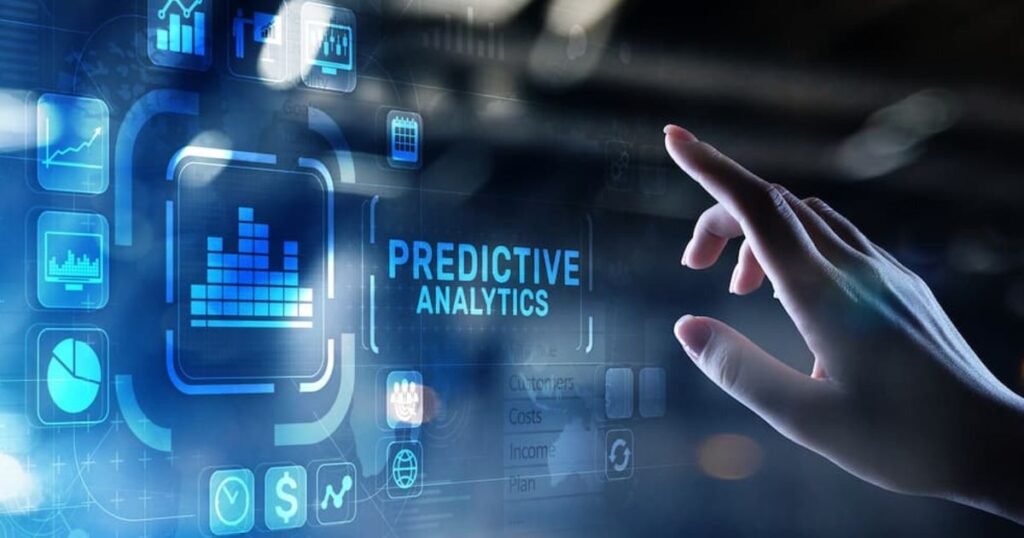Executive Summary
In a rapidly evolving business landscape, the ability to anticipate change and respond proactively has become a critical differentiator. Predictive analytics empowers organizations to make forward-looking decisions by analyzing current and historical data to forecast future events. Through statistical modeling, machine learning, and data mining, predictive analytics transforms raw data into strategic foresight—enabling smarter decisions, risk mitigation, and long-term value creation.
What is Predictive Analytics?
Predictive analytics refers to the use of advanced statistical techniques, machine learning algorithms, and data modeling to analyze historical and real-time data in order to predict future outcomes. Unlike descriptive analytics, which explains what has already happened, predictive analytics provides actionable insights into what is likely to happen—helping organizations stay one step ahead.
At its core, predictive analytics answers critical business questions such as:
- What will customer demand look like next quarter?
- Which transactions are most likely to be fraudulent?
- How can we optimize inventory or staffing ahead of seasonal changes?
This shift from reactive to proactive decision-making enables organizations to better align strategy, resources, and execution.
The Predictive Analytics Lifecycle
A successful predictive analytics initiative follows a structured, iterative process that combines data science rigor with business context:
- Define the Business Problem
Clearly articulate the challenge or opportunity. This may involve improving customer retention, forecasting revenue, reducing churn, or anticipating operational disruptions. - Data Collection and Preparation
Aggregate relevant historical and current data from diverse sources. Clean, transform, and standardize this data to ensure it is accurate, complete, and suitable for modeling. - Model Selection and Development
Choose the appropriate statistical or machine learning techniques—such as regression, decision trees, or neural networks—to develop predictive models that can uncover patterns and correlations. - Model Validation and Testing
Test the model’s accuracy and reliability using unseen data sets. Refine and calibrate the model based on performance metrics to avoid overfitting or bias. - Deployment and Monitoring
Integrate the model into business workflows. Monitor performance in real-time or scheduled intervals, and retrain as needed based on new data or changing conditions.
Each stage demands cross-functional collaboration between data scientists, domain experts, and business stakeholders to ensure that insights are relevant, actionable, and scalable.
Key Techniques in Predictive Analytics
Several advanced analytical methods are widely adopted across industries:
- Regression Analysis: Used to identify relationships between variables and predict continuous outcomes (e.g., revenue forecasts, pricing optimization).
- Classification Models: Categorize data into defined classes, such as high-risk vs. low-risk customers.
- Decision Trees: Provide a visual representation of decision paths and outcomes, useful for interpretability.
- Neural Networks and Deep Learning: Enable complex pattern recognition, particularly in high-volume, high-dimensional datasets.
- Time Series Forecasting: Predict future values based on past trends, seasonality, and cyclic behavior.
Each technique offers distinct strengths and should be matched to the complexity and nature of the prediction task.
Strategic Business Application
Predictive analytics is transforming business operations across virtually every sector. Notable applications include:
- Retail & eCommerce: Anticipating customer preferences, optimizing pricing strategies, and forecasting demand to reduce stockouts or overstocking.
- Healthcare: Predicting patient outcomes, hospital readmission rates, and disease progression to improve care delivery and resource planning.
- Finance & Banking: Enhancing credit scoring, detecting fraud in real time, and forecasting market trends for better portfolio management.
- Manufacturing: Enabling predictive maintenance, reducing downtime, and optimizing production schedules.
- Supply Chain: Improving logistics planning, reducing delivery times, and identifying risks in real-time across global networks.
- Marketing: Personalizing campaigns based on predicted customer behavior, increasing engagement and ROI.
The application of predictive analytics fosters agility, enhances customer experiences, and supports continuous improvement.
Leading Tools in Predictive Analytics
Organizations today have access to a variety of robust platforms to support their analytics strategy. Popular tools include:
- IBM Cognos Analytics: Offers comprehensive reporting and predictive modeling capabilities integrated with AI-driven insights.
- Amazon QuickSight: A cloud-based business intelligence tool that supports scalable analytics and integrates with AWS services.
- Microsoft Power BI: Delivers user-friendly dashboards and integrates with Azure Machine Learning for advanced modeling.
- Google Cloud BigQuery: Combines high-speed data processing with seamless machine learning model deployment.
- Tableau: Known for intuitive data visualizations, Tableau also supports predictive extensions through integrations with R and Python.
Choosing the right tool depends on the organization’s data infrastructure, analytics maturity, user skill sets, and strategic priorities.
Business Impact and Competitive Advantage
Organizations that embed predictive analytics into their decision-making processes realize tangible benefits, including:
- Increased Operational Efficiency: Through demand forecasting and resource optimization.
- Improved Risk Management: By proactively identifying and mitigating potential threats.
- Enhanced Customer Experience: Through personalized recommendations and engagement.
- Faster Time-to-Decision: By delivering insights at the point of need.
- Strategic Agility: By aligning planning cycles with real-time market dynamics.
Ultimately, predictive analytics serves as a foundational capability for data-driven transformation. As markets become more volatile and customer expectations evolve, organizations that master predictive intelligence will lead in innovation, resilience, and growth.



